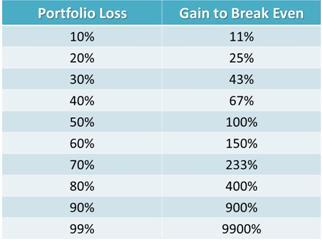Above is Daily Chart of BOVESPA
More Details to our Subscribers

A scribbled note by Albert Einstein which described his theory on the key to happy living was sold at auction in Jerusalem for $1.56m.

According to The Telegraph, the winning bid for the note far exceeded the pre-auction estimate of between $5,000 and $8,000,according to the website of Winner’s auction house.
“It was an all-time record for an auction of a document in Israel,” Winner’s spokesman Meni Chadad told AFP…Bidding in person, online and by phone, started at $2,000. A flurry of offers pushed the price rapidly up for about 20 minutes until the final two potential buyers bid against each other by phone. Applause broke out in the room when the sale was announced.
The newspaper reports that Einstein was on a lecture tour of Japan in 1922 and had recently been awarded the Nobel prize. Einstein didn’t have cash to pay a tip to a bellboy in the Imperial Hotel in Tokyo, so he gave him two notes, predicting they would be worth more than a tip. He is reported have said.
“Maybe if you’re lucky those notes will become much more valuable than just a regular tip.”
The Telegraph continues, Einstein dedicated his life to science, but suggested in the notes that fulfilling a long-term ambition doesn’t necessarily guarantee happiness.
The note said.
“A quiet and modest life brings more joy than a pursuit of success bound with constant unrest.”
The anonymous buyer was from Europe.
The notes were sold by an anonymous Hamburg resident who commented “I am really happy that there are people out there who are still interested in science and history and timeless deliveries in a world which is developing so fast.”
On the second note was written “where there’s a will, there’s a way”. It sold for $240,000.




Good Trades are made by managing the mind, ego, and emotions.
1. A good trade is taken with complete confidence and follows your trading method; a bad trade is taken on an opinion.
2. A good trade is taken with a disciplined entry and position size; a bad trade is taken to win back losses the market owes you.
3. A good trade is taken when your entry parameters line up; a bad trade is taken out of fear of missing a move.
4. A good trade is taken to be profitable in the context of your trading plan; a bad trade is taken out of greed to make a lot of money quickly.
5. A good trade is taken according to your trading plan; a bad trade is taken to inflate the ego.
6. A good trade is taken without regret or internal conflict; a bad trade is taken when a trader is double-minded.
Good trades are just one trade inside a robust methodology that gives the traders an advantage int eh long term.
7. A good trade is based on your trading plan; a bad trade is based on emotions and beliefs.
8. A good trade is based on your own personal edge; a bad trade is based on your opinion.
9. A good trade is made using your own timeframe; a bad trade changes timeframe due to a loss.
10. A good trade is made in reaction to current price reality; a bad trade is made based on personal judgment.
11. A good trade is made after identifying and trading with the trend; a bad trade fights the trend.
12. A good trade is made using the trading vehicles you are an expert in; a bad trade is when you trade unfamiliar markets. (more…)